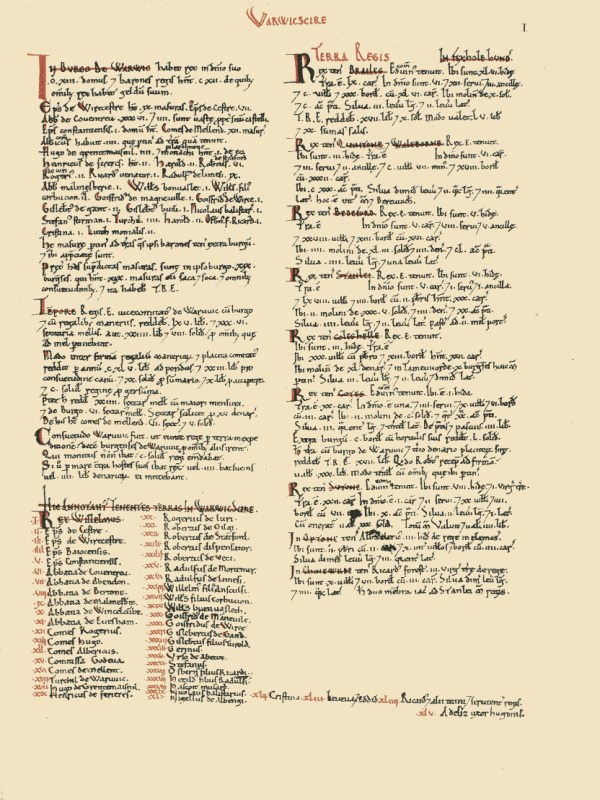William Duke of Normandy led an army across the English Channel to invade England in 1066. William defeated King Harold’s English army at the Battle of Hastings - this English army was made up of numerous Anglo-Saxon lords and their followers. England was already composed of shires, each with its sheriff, each shire divided into “Hundreds” made up of about fifty local communities. Each of these communities or manors had a manorial lord to who gave protection and security to the inhabitants in return for their loyalty and faithful service; the manorial lords in turn owed services to their overlords and to the crown. After the Battle of Hastings, most of this Anglo-Saxon aristocracy was dispossessed, and William rewarded his Norman friends and followers who had won the battle by granting them English estates.
When the country was pacified and the feudal system was in place - a harsher version of the previous social structure - William the Conqueror felt the need to review the state of his new kingdom. In 1085, “at Gloucester in midwinter the King had deep speech with his counsellors and sent men all over England to each shire to find out what and how much each landowner held”. These king’s men, the surveying commissioners, were organised into seven circuits covering regions of the country; Warwickshire was in Circuit IV, along with Leicestershire, Northamptonshire Oxfordshire and possibly Staffordshire. All the information was collected together and reduced to a standard format, and a fair copy made for presentation to the King in 1086. This massive document served as a source of reference for succeeding generations, so that “every man should know his right and not usurp another’s” - it became known as the Domesday Book.
The first historical record relating to Sutton Coldfield is found in the Domesday Book. The Warwickshire section begins with a list of the overlords or tenants-in-chief with estates in the county, followed by an account of the manors owned directly by the Crown. Of over 350 places in Warwickshire, nine were royal manors. Although the Domesday record appears to be a series of simple factual statements, the precise meaning of almost every item is difficult to prove, and it seems likely that some apparently significant items were not recorded. However, the information about ownership before the conquest is straightforward - the Sutton entry states that Edwin Earl of Mercia held Sutton before the Conquest, so perhaps the earlier King Offa of Mercia had also held it - his capital for a time was Tamworth - as it provided a useful base for the main leisure activity of the aristocracy, hunting. So Sutton has been a Royal Town for fifteen hundred years.

